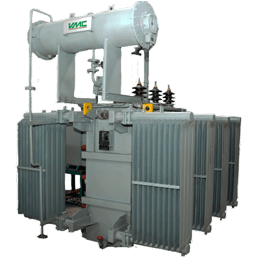What is Inrush current in Transformer?
When a transformer is taken off-line, there will be a certain amount of residual flux that can remain in the core due to the properties of the magnetic core material. The residual flux can be as much as 50 to90% of the maximum operating flux, depending on the type of core steel. When voltage is reapplied to the transformer, the flux introduced by this source voltage will build upon that which already exists in the core. In order to maintain this level of flux in the core, which can be well into the saturation range of the core steel, the transformer can draw current well in excess of the transformer’s rated full load current.
Depending on the transformer design, the magnitude of this current inrush can be any wherefrom 3.5 to 40 times the rated full load current. The waveform of the inrush current will be similar to a sine wave, but largely skewed towards the positive or negative direction. This inrush current will experience a decay, partially due to losses, which will provide a dampening effect; however, the current can remain well above rated current for many cycles.
This inrush current can have an effect on the operation of relays and fuses located in the system near the transformer. Decent approximations of the inrush current require detailed information regarding the transformer design which may be available from the manufacturer but is not typically available to the user. Actual inrush currents will also depend upon where in the source voltage wave the switching operations occur, the moment of opening effecting the residual flux magnitude, and the moment of closing effecting the new flux.
Modern and Future Developments
High-Voltage Generator (Power Transformer)
Because electricity is currently generated at voltage levels that are too low to be efficiently transmitted across the great distances that the power grid typically spans, step-up transformers are required at the generator. With developments in high-voltage cable technology, a high-voltage generator, called the power transformer, has been developed that will eliminate the need for this GSU transformer and associated equipment. This power transformer can reportedly be designed to generate power at voltage levels between20 and 400 kV to directly feed the transmission network.
High-Temperature Superconducting (HTS) Transformer
Superconducting technologies are being applied to power transformers in the development of what are being referred to as high-temperature superconducting (HTS) transformers. In HTS transformers, the copper and aluminum in the windings would be replaced by superconductors. In the field of superconductors, high temperatures are considered to be in the range of –250 to –200°F, which represents quite a significant deviation in the operating temperatures of conventional transformers. At these temperatures, insulation of the type currently used in transformers would not degrade in the same manner. Using superconducting conductors in transformers requires advances in cooling, specifically refrigeration technology directed toward use in transformers.
The predominant cooling medium in HTS development has been liquid nitrogen, but some other mediums have been investigated as well. Transformers built using HTS technology would reportedly be of reduced size and weight and capable of overloads without experiencing “loss of life” due to insulation degradation, instead using an increased amount of the replaceable coolant. An additional benefit would bean increase in efficiency of HTS transformers over conventional transformers due to the fact that resistance in superconductors is virtually zero, thus eliminating the I2R loss component of the load losses.

